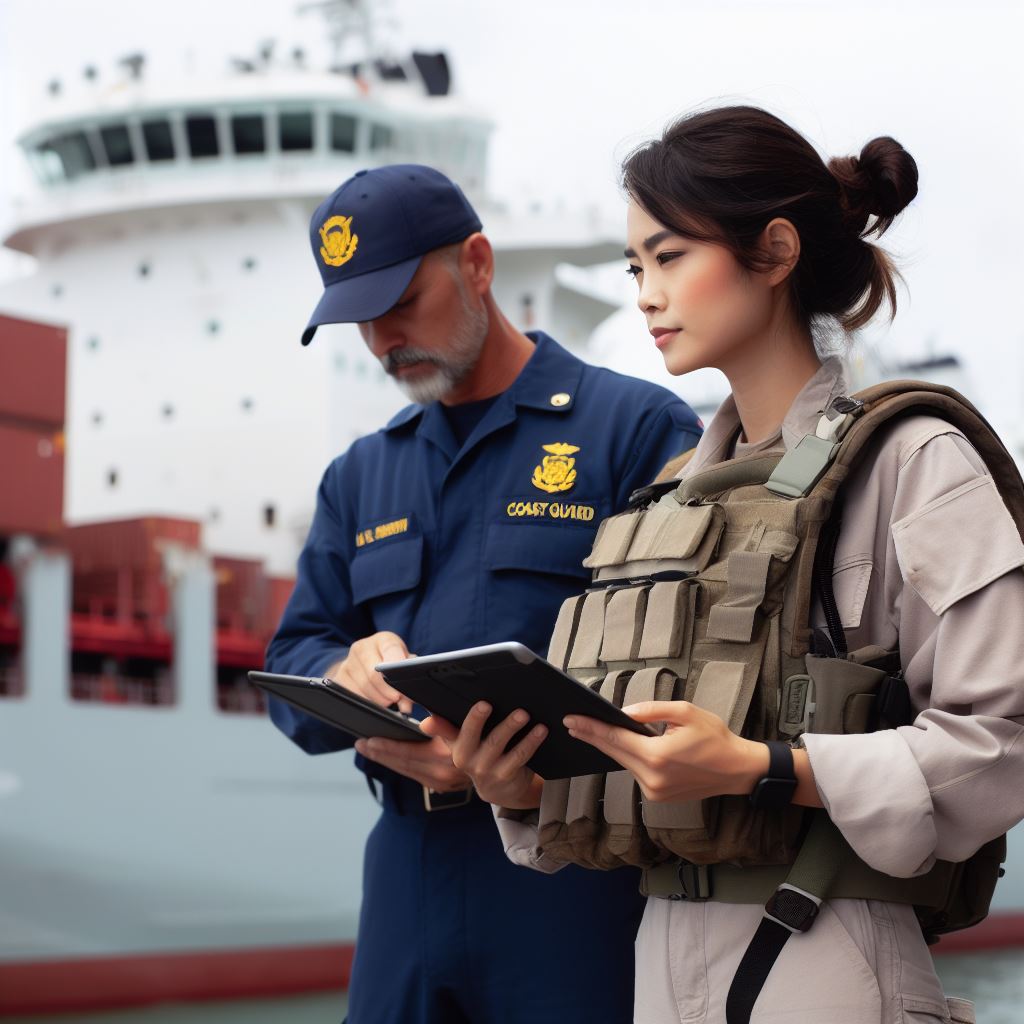Introduction
Military technology plays a crucial role in modern warfare, significantly impacting military operations and outcomes.
The tools used by modern American soldiers have revolutionized the way battles are fought and won.
Through continuous advancements, military technology enhances the effectiveness, efficiency, and safety of soldiers on the battlefield.
These technological tools have reshaped the way wars are waged, offering unprecedented capabilities and advantages to American forces.
From weaponry and communication systems to surveillance and protective gear, the tools used by modern American soldiers have fundamentally transformed military operations.
This section explores the importance of military technology and its profound impact on the modern American soldier’s effectiveness in combat.
By embracing cutting-edge technology, American soldiers are empowered with superior situational awareness, firepower, and protection, ultimately having a decisive influence on the outcomes of military engagements.
The evolution and adoption of military technology by the United States military highlight the critical role it plays in maintaining a strategic advantage over adversaries.
Delving into modern American soldiers’ tools highlights how military technology significantly shapes outcomes in contemporary warfare, emphasizing its indispensability.
In the following sections, we will explore the specific tools and advancements that have transformed the landscape of military operations for the modern American soldier.
History of Military Technology
Evolution of military tools and weapons
Military technology has evolved significantly throughout history, with the development of advanced tools and weapons.
The evolution of military tools and weapons can be traced back to ancient times.
In ancient civilizations, warriors primarily used weapons like spears, swords, and bows.
The invention of gunpowder revolutionized warfare during the Middle Ages.
Cannons and muskets became essential military tools during this period.
The Industrial Revolution brought significant advancements in military technology.
The invention of the steam engine led to the development of armored vehicles and steam-powered warships.
The American Civil War witnessed the introduction of rifled muskets and ironclads, changing the face of warfare.
Major advancements throughout history
The 20th century marked a rapid acceleration in military technology.
World War I saw the introduction of tanks, machine guns, and chemical weapons.
The invention of the airplane allowed for aerial reconnaissance and bombing during World War I.
World War II witnessed the development of nuclear weapons, which forever changed the nature of warfare.
The Cold War era saw a technological arms race between the United States and the Soviet Union.
Satellites, intercontinental ballistic missiles, and electronic warfare systems became integral to military strategies.
The Information Age brought further advancements in military technology.
The development of computers and communication systems revolutionized military command and control.
Precision-guided munitions, drones, and stealth technology transformed modern warfare.
Impact of technology on warfare strategies
The impact of technology on warfare strategies has been immense.
Advancements in military technology have allowed for more efficient and precise military operations.
Transform Your Career Today
Unlock a personalized career strategy that drives real results. Get tailored advice and a roadmap designed just for you.
Start NowDigital technology has enabled real-time intelligence gathering and analysis, enhancing situational awareness.
Remote-controlled weaponry and unmanned vehicles have reduced the risks faced by soldiers on the battlefield.
Cyber warfare has become a critical component of modern military strategies.
The use of malware, hacking, and other cyber-attacks can cripple an opponent’s infrastructure and communication networks.
Artificial intelligence has the potential to revolutionize military operations in the future.
Autonomous weapons systems and AI-powered decision-making could drastically change the way wars are fought.
However, there are ethical concerns about the use of such technologies and their potential risks.
The development and use of military technology will continue to evolve, shaping the nature of future conflicts.
In closing, the history of military technology is characterized by continuous advancements and their impact on warfare strategies.
From ancient weapons to modern drones, each era has witnessed significant developments that have changed the way wars are fought.
Technology has allowed for more effective and efficient military operations, but it also poses ethical challenges.
As technology continues to advance, the future of military technology holds great potential and risks alike.
Read: Veterans Transitioning to Security Roles: A Guide for the U.S. Market
Modern Weapons and Equipment
Firearms and ammunition
- Different types of rifles, pistols, and machine guns provide soldiers with various options.
- The advancement in ammunition technology has greatly improved accuracy, firepower, and reliability.
Armored Vehicles
- Tanks, capable of offensive and defensive maneuvers, play a vital role in modern warfare.
- Infantry Fighting Vehicles (IFVs) carry troops, provide fire support, and enhance mobility on the battlefield.
Communication and Surveillance Devices
- Portable radio systems enable seamless communication between soldiers and command centers.
- Drones have revolutionized intelligence gathering, providing real-time visual and data information.
Night Vision and Optics
- Visibility is crucial in modern warfare, and night vision technology enhances soldiers’ capabilities.
- Thermal imaging and night vision goggles enable soldiers to see in low-light environments, gaining a tactical advantage.
These advancements contribute to enhanced situational awareness and effectiveness across various applications.
Read: Physical Fitness Standards and Tips for U.S. Security Guards
Cyber Warfare and Electronic Systems
Overview of cyber warfare and its impact
Cyber warfare is a growing threat that impacts various sectors of society, including the military. (20 words)
Cyber warfare has become a major concern for military strategists and national security agencies.
With the rapid advances in technology, the battlefield has expanded beyond physical warfare to include cyberspace.
This new domain poses unique challenges and requires the development of specialized tools and techniques.
Tools used for cyber defense and offense
The impact of cyber warfare is far-reaching. It can disrupt critical infrastructure, compromise sensitive data, and undermine the capabilities of military forces.
Non-state actors and individuals, not just nation-states, can now cause significant harm through cyber attacks, expanding the threat landscape.
Encryption and decryption systems
Encryption and decryption systems play a crucial role in protecting sensitive information from unauthorized access.
To defend against these threats, the modern American soldier relies on sophisticated tools and systems. Encryption and decryption systems are key components of cyber defense.
They ensure that sensitive information remains secure and unreadable to unauthorized entities.
These systems use complex algorithms to encode data, making it indecipherable without the appropriate decryption key.
Cybersecurity measures
In the modern battlefield, cybersecurity measures are essential for defending against cyber attacks and maintaining operational integrity.
Additionally, cybersecurity measures are implemented to safeguard military networks and systems.
Deploy firewalls, intrusion detection systems, and antivirus software to detect and prevent unauthorized access and malicious activities.
Conduct regular vulnerability assessments and penetration testing to identify exploitable weaknesses.
The American soldier needs offensive capabilities against cyber threats, using tools to disrupt enemy networks, gather intelligence, and conduct espionage.
These tools often remain covert, operating in the digital domain without physical presence.
Transform Your Career Today
Unlock a personalized career strategy that drives real results. Get tailored advice and a roadmap designed just for you.
Start NowThe need for effective cyber defense and offense has prompted the military to prioritize the development of cyber warriors.
These soldiers possess specialized training in cyber operations, including offensive and defensive techniques.
They are equipped with the knowledge and skills to navigate the complexities of cyberspace and engage in cyber warfare effectively.
Ultimately, cyber warfare has become an integral part of modern military operations.
Its impact spans various sectors, including the military, and poses significant threats.
Encryption and decryption systems, as well as cybersecurity measures, are essential tools for defending against cyber attacks.
Concurrently, offensive cyber tools are employed to counter adversaries.
To combat these threats effectively, the American soldier must be equipped with specialized training and skills in cyber operations.
Read: A Day in the Life of a U.S. Army Soldier: Real Stories

Military Technology Innovations
Military technology has always been a vital aspect of staying ahead in the ever-evolving landscape of warfare.
From ancient tools to modern innovations, the tools employed by the American soldier continue to undergo significant advancements.
In this section, we will explore the role of robotics and artificial intelligence (AI) in military operations, and examine the potential future impact of military technology on warfare strategies.
Robotics and Artificial Intelligence (AI)
- The use of robots in dangerous operations has increased the safety of American soldiers.
- AI-powered systems aid in faster and more accurate decision-making on the battlefield.
The use of robots in dangerous operations has revolutionized the field of military technology.
Unmanned systems now handle tasks too hazardous for soldiers. Robots, with advanced sensors, gather crucial information in hostile territories, sparing human lives.
Additionally, robots can be employed for bomb disposal, reducing the risks involved in handling explosive devices.
Artificial intelligence (AI) has become a force multiplier in modern warfare.
AI-powered systems are capable of analyzing vast amounts of data and providing real-time insights, enabling faster and more accurate decision-making on the battlefield.
These systems can quickly process information from multiple sources, such as satellite images, drone feeds, and intelligence reports, allowing commanders to make informed choices in a time-sensitive environment.
By leveraging AI, the American military can gain a significant advantage over adversaries.
Future of Military Technology
- Ongoing exploration of advancements in technology will shape the future of the American military.
- These advancements have the potential to greatly impact warfare strategies and tactics.
The future of military technology holds great promise as advancements continue to be made in various fields.
Research and development teams are constantly exploring new technologies to enhance the capabilities of American soldiers.
These include innovative weapons systems, advanced communication networks, and wearable technologies that enhance situational awareness.
The potential impact of future military technologies on warfare strategies cannot be underestimated.
Advancements in fields such as artificial intelligence, nanotechnology, and cyber warfare present both opportunities and challenges.
The development of autonomous weapon systems, for example, raises ethical concerns and questions regarding human control over machines.
However, these advancements also offer the potential for greater precision, reduced collateral damage, and increased efficiency on the battlefield.
In the end, the military technology landscape is constantly evolving, driven by the need to enhance the capabilities and safety of American soldiers.
The utilization of robotics and AI has already revolutionized military operations by allowing for the execution of dangerous tasks and facilitating faster decision-making.
Looking ahead, continued exploration and development of innovative technologies will shape the future of the American military, potentially transforming warfare strategies and tactics.
It is essential for the United States to stay at the forefront of these advancements to maintain dominance on the modern battlefield.
Read: Balancing Vigilance and Courtesy: A U.S. Security Guard Challenge
Conclusion
Recap of the Importance of Military Technology
Military technology plays a vital role in the success of modern American soldiers and their military operations.
It equips them with advanced tools that enhance their capabilities, effectiveness, and survivability on the battlefield.
Emphasis on the Continuous Evolution of Tools and its Impact on Soldiers and Military Operations
The continuous evolution of military technology has significantly impacted the way soldiers operate in warfare.
Advancements in communication, weaponry, surveillance, and protection systems have revolutionized the strategies and tactics employed on the battlefield.
Soldiers now have access to state-of-the-art equipment, such as drones, night vision goggles, advanced body armor, and GPS navigation systems, which provide them with a technological edge over their adversaries.
Real-time communication and data sharing empower soldiers to coordinate, respond swiftly, and enhance situational awareness and decision-making processes.
The increased precision and range of modern weapons have not only reduced collateral damage but also enabled American soldiers to engage enemies from a safer distance, reducing the risk to their own lives.
Advanced protection systems, like ceramic plates in body armor and MRAPs, saved lives by improving defense against threats.
To summarize, military technology is crucial for the modern American soldier, as it empowers them with tools that enhance their effectiveness, survivability, and mission success rate.
The continuous evolution of these tools continues to shape warfare and revolutionize military operations worldwide, making the armed forces more efficient and better equipped to face the challenges of the future.
[E-Books for Sale]
The Big Book of 500 High-Paying Jobs in America: Unlock Your Earning Potential
$19.99 • 500 High-Paying Jobs • 330 pages
Explore 500 high-paying jobs in America and learn how to boost your career, earn more, and achieve success!
See All 500 High-Paying Jobs of this E-Book
1001 Professions Without a Degree: High-Paying American Jobs You Can Start Now
$19.99 • 1001 Professions Without a Degree • 174 pages
Discover 1001 high-paying jobs without a degree! Unlock career tips, skills, and success strategies for just $19.99!




